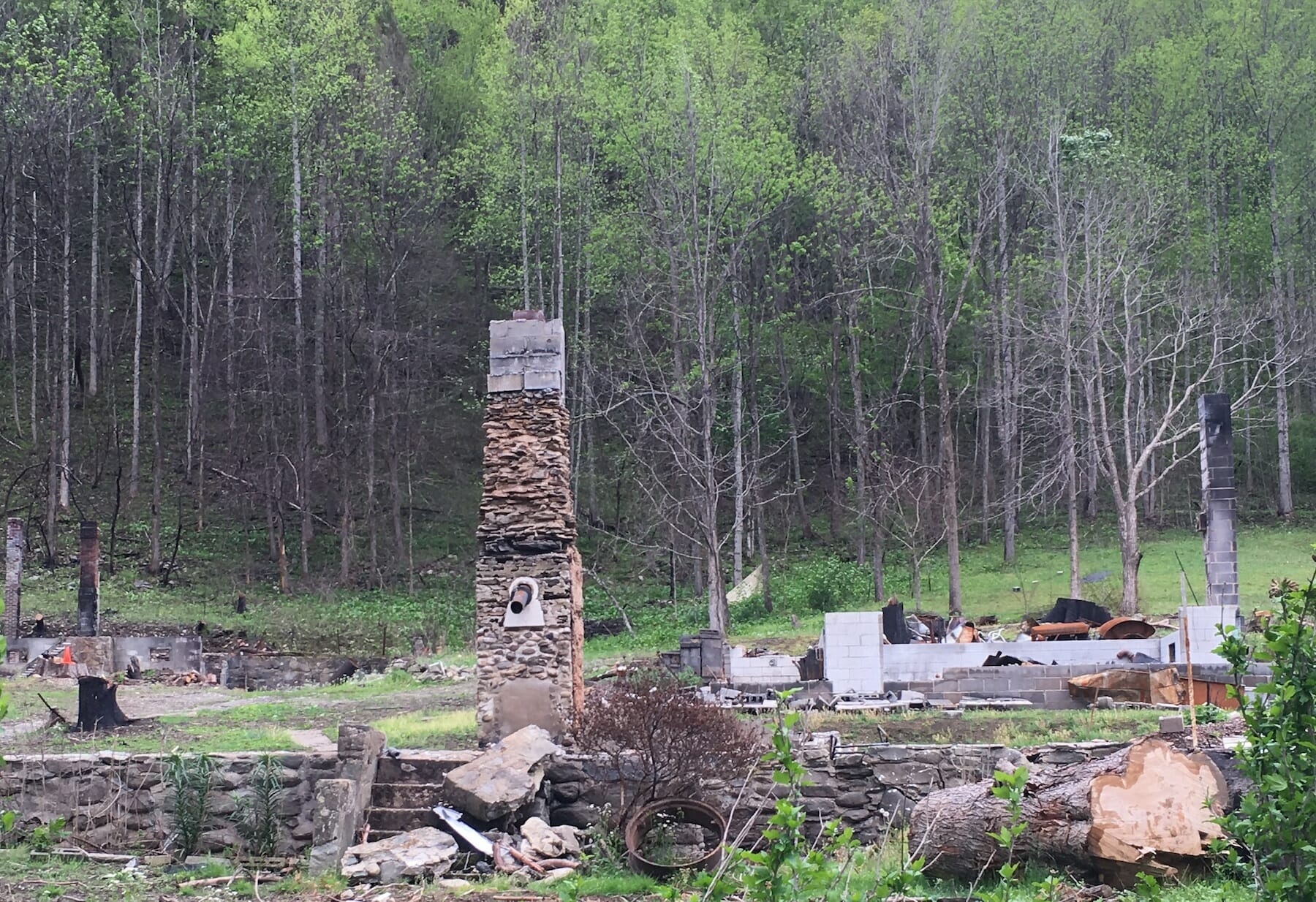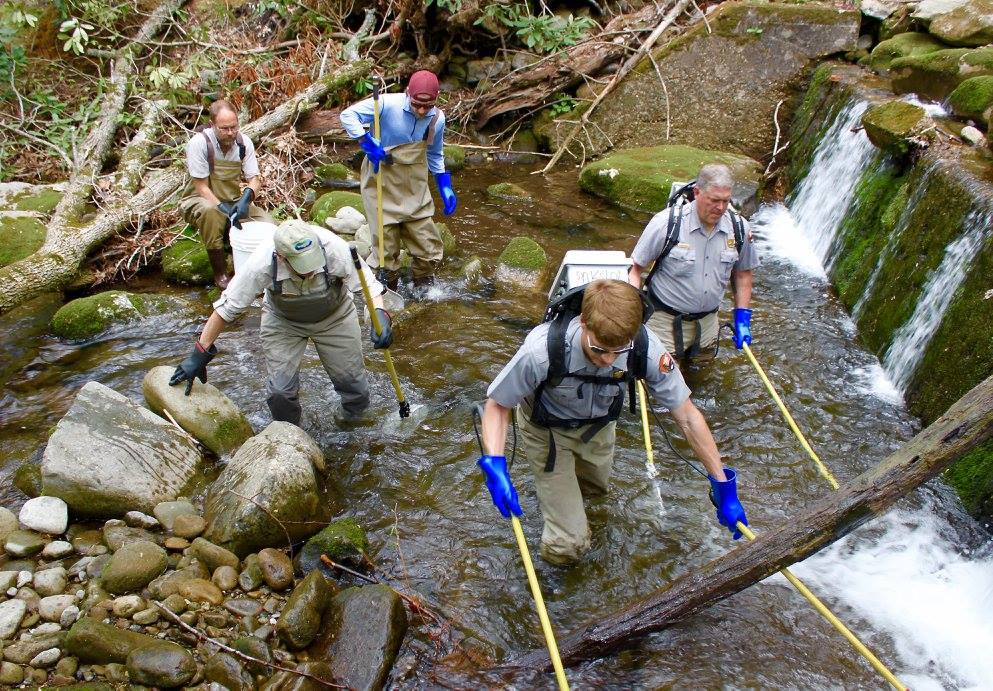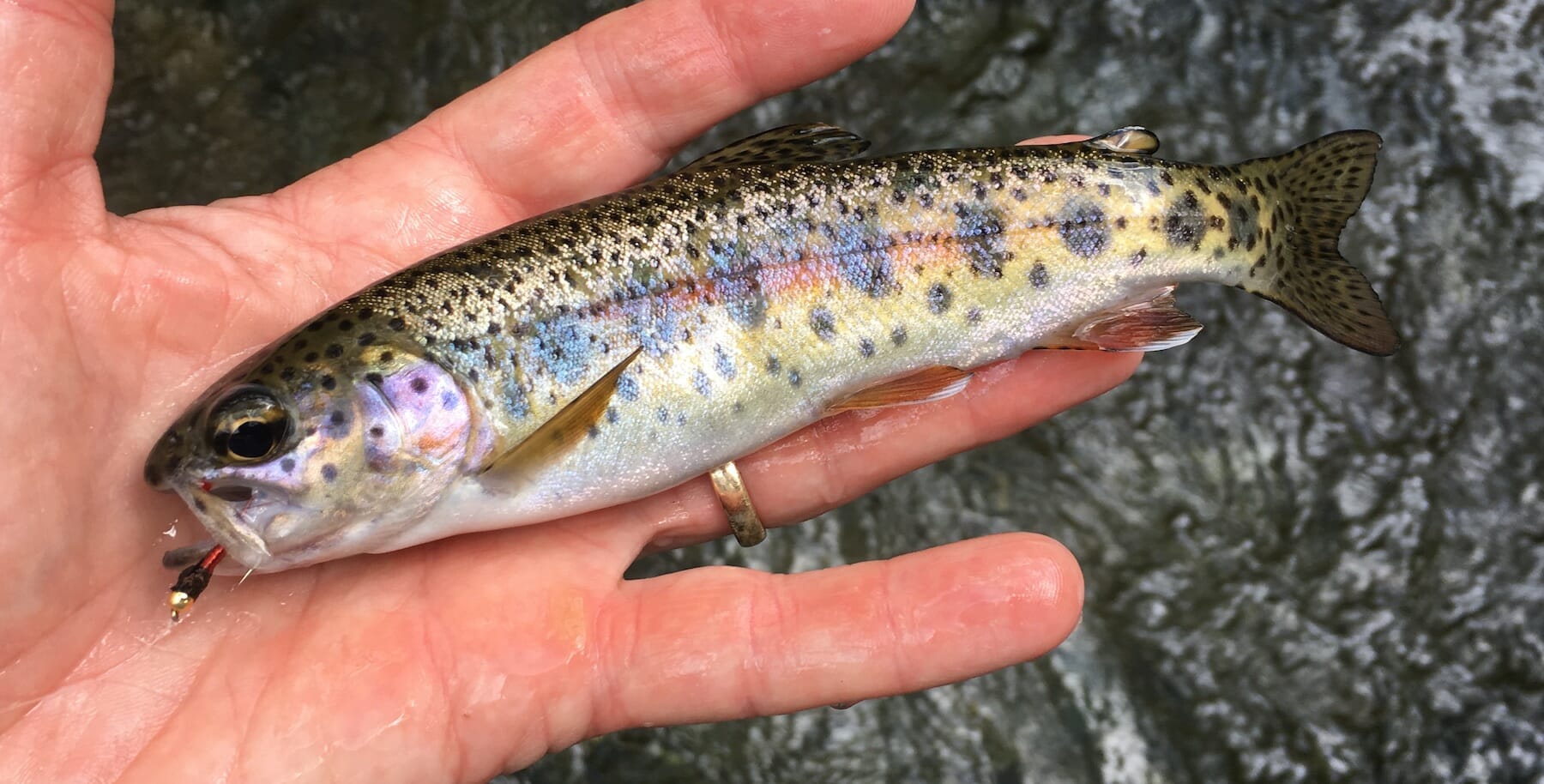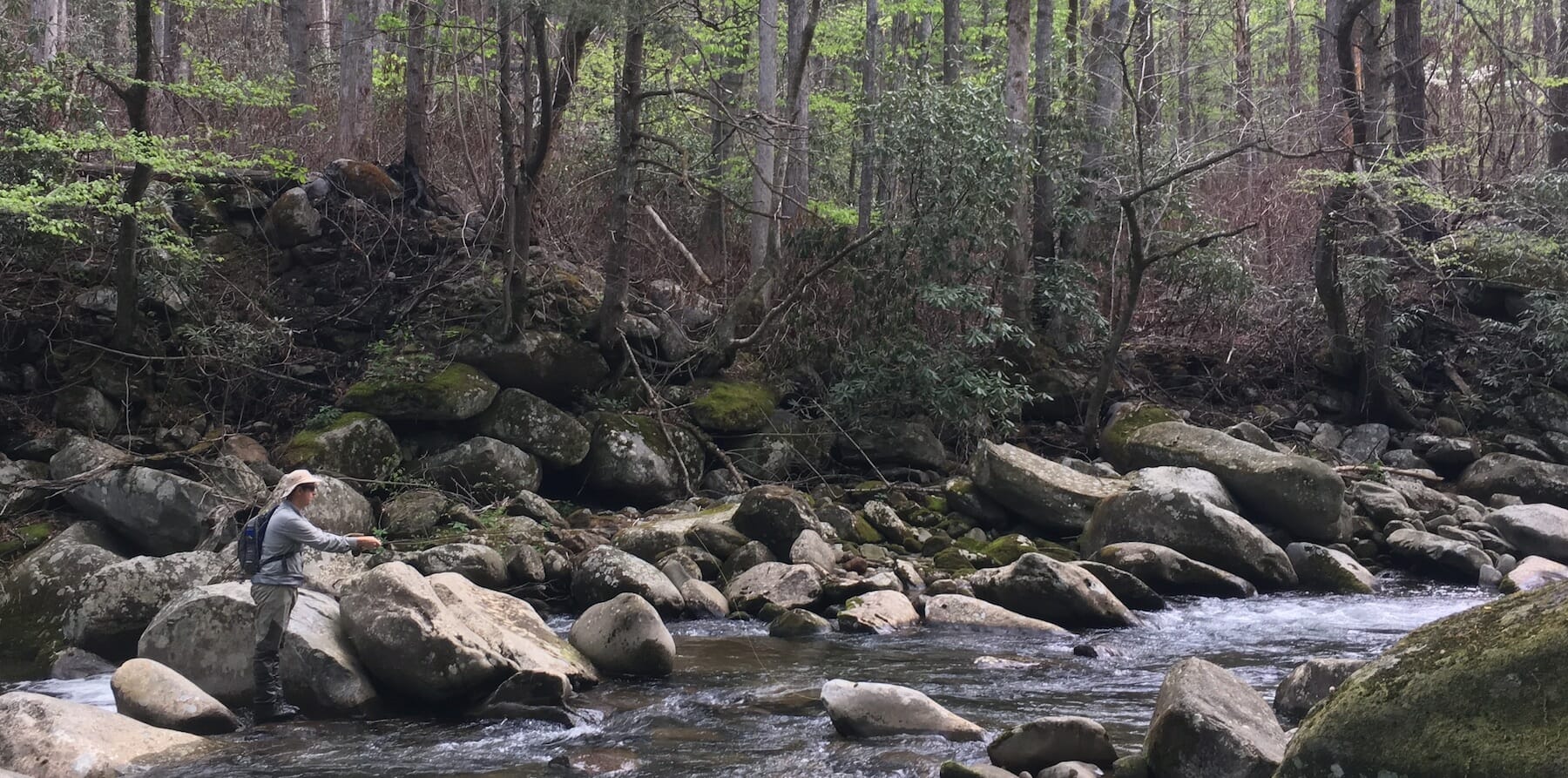Wes Gwaltney, president of the New River Valley of Trout Unlimited, fishes the West Prong of the Pigeon River near Gatlinburg, Tenn., in late April. Even as damage from 2016 fires remains, the forest in the Great Smoky Mountains National Park is greening up with the arrival of spring. (Mark Taylor photo.)
By Mark Taylor
Gatlinburg, Tenn. — When a terrible wildfire roared through the resort town of Gatlinburg, Tenn., last November, the terrifying images and stories made national news.
Not quite a half-year later, the tourists have returned but the scars remain.
While the main tourist strip escaped the worst of the devastation, more than 2,400 structures in the area were damaged or destroyed.
The destruction seems almost random, with foundations and chimneys all that remain of some homes (below), while homes next door appear to have been completely untouched.
 alt=”” title=”” />
alt=”” title=”” />
“Mountain strong” is a common phrase on marquees throughout the town, where residents have come together to rebuild and stand resolute in the wake of a tragedy that cost 14 people their lives.
Gatlinburg is what it is in large part due to the Great Smoky Mountains National Park, a gem against which the town butts up.
The fire started in the park, about 10 miles from the town at a place called the Chimneys.
Like in the community, the destruction in the mountains is a patchwork. Some ridges and hillsides are heavily charred and blackened. Elsewhere there are just small spots of damage, or none at all. In all, of the 17,000 acres burned, nearly 11,000 were in the park.
Even in the scorched sections of the woods there is new life, with fresh grass shoots on the forest floor and many trees, even with blackened trunks, sporting green buds and young leaves as spring takes hold.
Just as the community is standing strong in recovery, so is nature.
A year ago Trout Unlimited’s volunteer operations staff selected Gatlinburg as the site of the 2017 Southeast Regional Rendezvous, a meeting where volunteer leaders and a few TU staffers gather to talk about programs, projects and initiatives. They stuck with their plans after the fire, and it gave the more than 100 in attendance a chance to see how the community and nature have responded.
Matt Kulp, fisheries biologist for the Great Smoky Mountains National Park, has been monitoring park streams in the burn area.
There have been no major erosion issues. The West Prong Little Pigeon River has been monitored since early December for turbidity. Readings during storm events, when turbidity typically increases, have not been significantly different than prior to the fires.
Kulp said what chemistry is also being monitored, and those values also have been similar to pre-fire levels.
Did the fire impact fish populations?
Most effects typically occur within a year. They can include sedimentation that affects spawning or actually suffocates fish. No fish kills have been observed since the fire and Kulp said he doesn’t impact any short- or long-term impacts on fish populations.
 alt=”” title=”” />The day before the Rendezvous meeting began, Kulp (above, far right) led a group of meeting attendees on an electrofishing outing on LeConte Creek, a tributary to the West Prong Little Pigeon River that starts high in the park and runs through Gatlinburg — adjacent to the event’s host hotel, the Glenstone Lodge.
alt=”” title=”” />The day before the Rendezvous meeting began, Kulp (above, far right) led a group of meeting attendees on an electrofishing outing on LeConte Creek, a tributary to the West Prong Little Pigeon River that starts high in the park and runs through Gatlinburg — adjacent to the event’s host hotel, the Glenstone Lodge.
As the electrified probes sent their current into the creek’s clear waters, volunteers with nets scooped up brook trout that had been momentarily stunned by the voltage. The fish were plump and healthy.
Elsewhere throughout the park other meeting attendees were hoping to tangle with fish in a more traditional way, with rods and reels. I was able to fish the West Prong Little Pigeon River with Wes Gwaltney, president of the New River Valley (Virginia) chapter.
Anglers familiar with Park streams had given me fair warning about the rugged terrain, but I was still surprised. Fishing our way up the river, near where the fire started at the Chimneys picnic area, was no small task. Nor was bushwhacking back downstream after we had fished a few hundred yards of water.
The fish were there.
Small dries would draw them up for a look, but they were fickle.
 alt=”” title=”” />Finally I hooked a fish on a Copper John nymph drifted through a sweet pocket. The fish pulled hard, and I thought I’d somehow managed to latch onto a 12- or 13-inch rainbow, a trophy in this small water.
alt=”” title=”” />Finally I hooked a fish on a Copper John nymph drifted through a sweet pocket. The fish pulled hard, and I thought I’d somehow managed to latch onto a 12- or 13-inch rainbow, a trophy in this small water.
But then the fish (above) showed itself. It was maybe 8 inches long.
The fish here, clearly, are mountain strong, too.
Mark Taylor is Trout Unlimited’s eastern communications director. He lives in Roanoke, Va., in the heart of Appalachian trout country.



